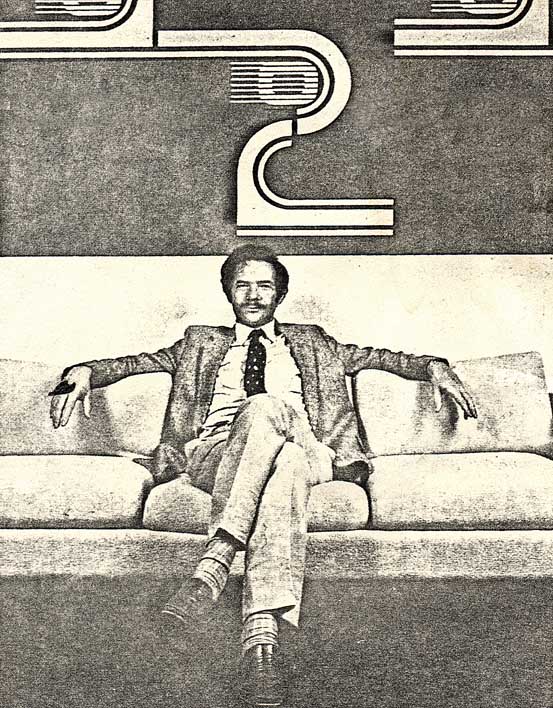|
|---|
History of the Osborne Computer Corporation |
- 1971: In November, Intel released the 4004, the first microprocessor chip. Documentation manuals
were written by Adam Osborne who later founded the Osborne Computer Company.
- 1980: March - At the West Coast Computer Faire, Adam Osborne approaches Les Felsenstein with the idea
of starting a computer company.
- 1981: January - Osborne Computer Corporation is incorporated
- 1981: April - Adam Osborne, of Osborne Computer Corporation, introduces the Osborne 1 Personal Business
Computer at the West Coast Computer Faire
- 1981: September - Osborne Computer Company has its first US$1 million sales month.
- 1982: August - Microsoft releases Multiplan for the Apple II and the Osborne I.
- 1982: In the first 8 months since its introduction, 11,000 Osborne 1 computers ship.
- 1983: March - Osborne Computer introduces The Osborne Executive and the Executive II portable computers.
- 1983: September - Osborne Computer Corp. files for Chapter 11 bankruptcy protection
Source:
Chronology of Events in the History of Microcomputers
| |
|---|
|
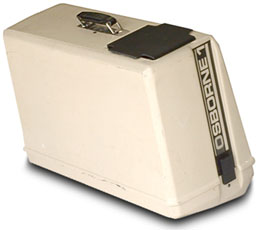


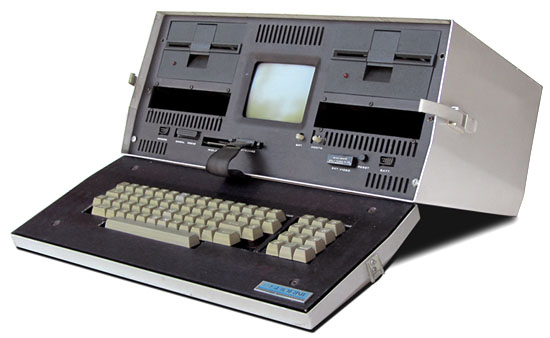 What makes it portable, or more often described as luggable, is that everything is in one package, easily transported from one
location to another by simply unplugging the power, attaching the keyboard to the front of the system, and being on your way.
The leather carrying handle on the back is a classy touch.
What makes it portable, or more often described as luggable, is that everything is in one package, easily transported from one
location to another by simply unplugging the power, attaching the keyboard to the front of the system, and being on your way.
The leather carrying handle on the back is a classy touch.
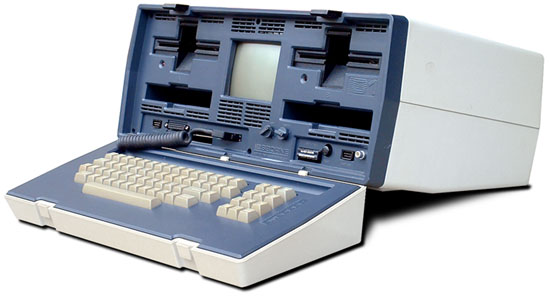 The Osborne 1 was first unveiled to the public at the March 1981 6th West Coast Computer Faire and May 1981
National Computer Conference.
The Osborne 1 was first unveiled to the public at the March 1981 6th West Coast Computer Faire and May 1981
National Computer Conference.

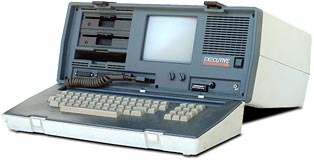 In 1982, the Osborne Computer Company (OCC) announced a successor, the Executive model OCC-2
(seen here to the right), with a larger 7-inch 80x24 screen, twice as much RAM memory, and double-density
floppy drives as standard. It was also more expensive at $2,495.
In 1982, the Osborne Computer Company (OCC) announced a successor, the Executive model OCC-2
(seen here to the right), with a larger 7-inch 80x24 screen, twice as much RAM memory, and double-density
floppy drives as standard. It was also more expensive at $2,495.
